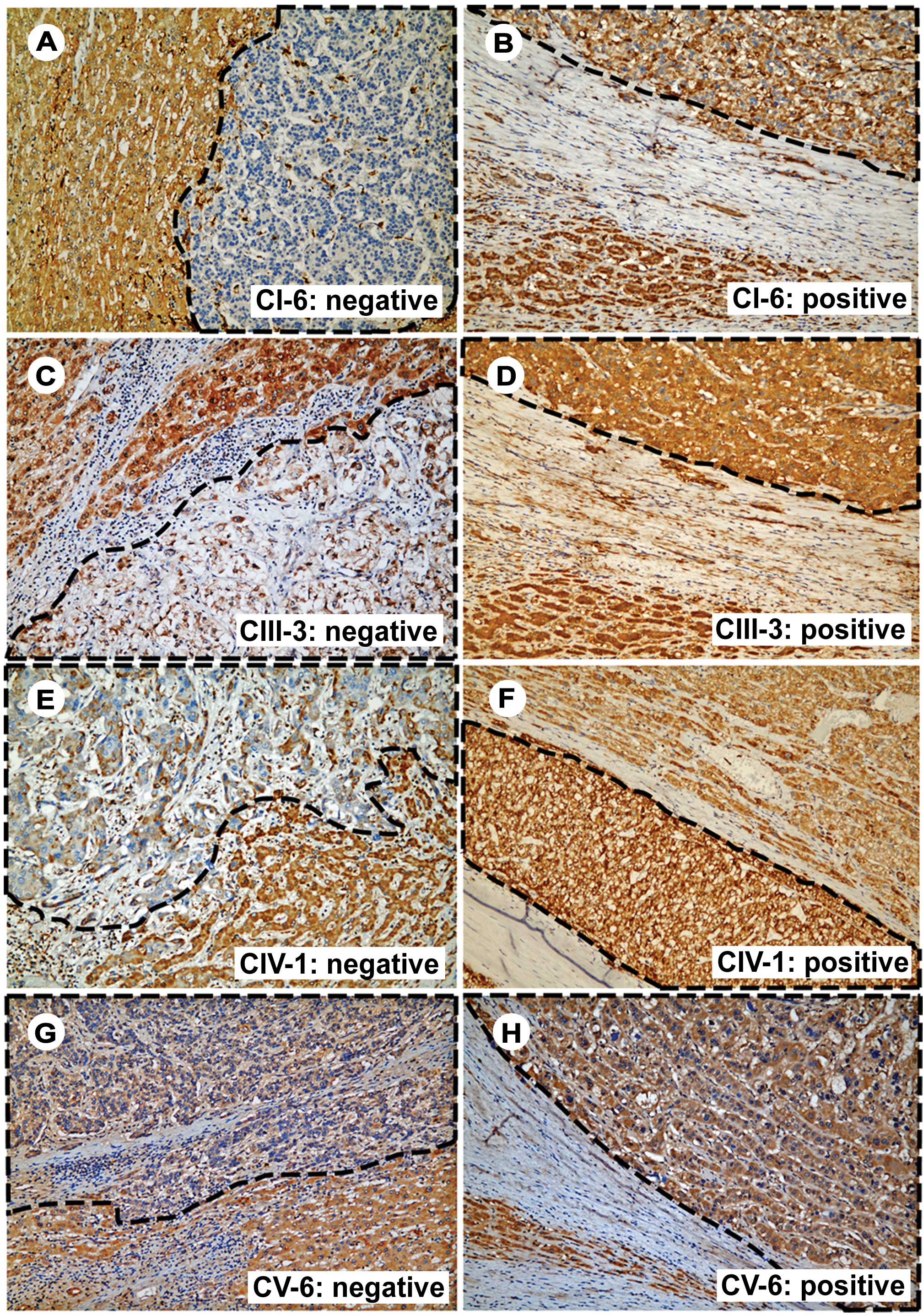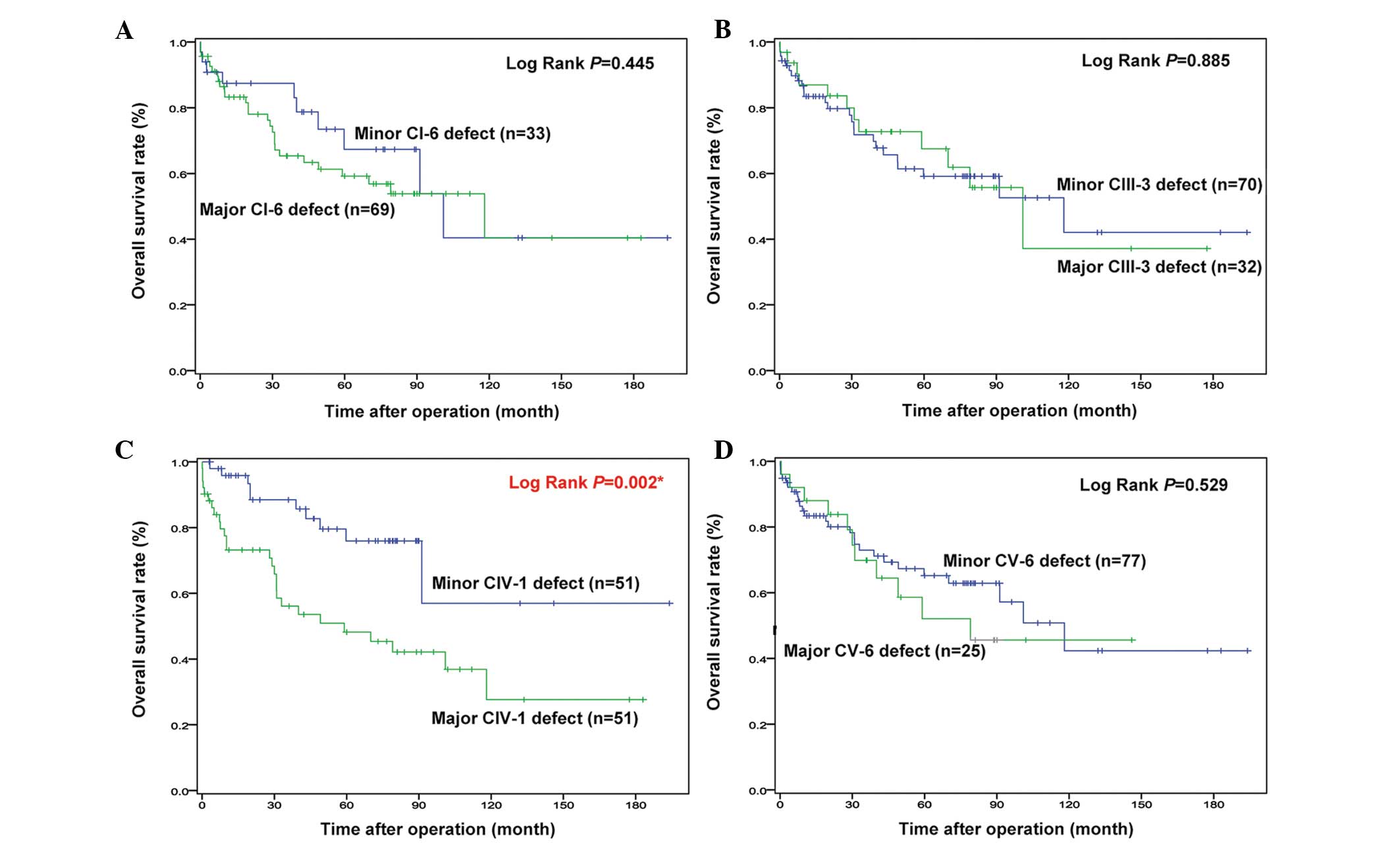|
1
|
Forner A, Llovet JM and Bruix J:
Hepatocellular carcinoma. Lancet. 379:1245–1255. 2012. View Article : Google Scholar
|
|
2
|
Sherman M: Hepatocellular carcinoma:
epidemiology, surveillance, and diagnosis. Semin Liver Dis.
30:3–16. 2010. View Article : Google Scholar
|
|
3
|
Marra M, Sordelli IM, Lombardi A, et al:
Molecular targets and oxidative stress biomarkers in hepatocellular
carcinoma: an overview. J Transl Med. 9:1712011. View Article : Google Scholar : PubMed/NCBI
|
|
4
|
Shen HM and Ong CN: Mutations of the p53
tumor suppressor gene and ras oncogenes in aflatoxin
hepatocarcinogenesis. Mut Res. 366:23–44. 1996. View Article : Google Scholar : PubMed/NCBI
|
|
5
|
El-Serag HB: Hepatocellular carcinoma. N
Engl J Med. 365:1118–1127. 2011. View Article : Google Scholar : PubMed/NCBI
|
|
6
|
Llovet JM, Schwartz M and Mazzaferro V:
Resection and liver transplantation for hepatocellular carcinoma.
Semin Liver Dis. 25:181–200. 2005. View Article : Google Scholar : PubMed/NCBI
|
|
7
|
Hoshida Y, Villanueva A, Kobayashi M, et
al: Gene expression in fixed tissues and outcome in hepatocellular
carcinoma. N Engl J Med. 359:1995–2004. 2008. View Article : Google Scholar : PubMed/NCBI
|
|
8
|
Imamura H, Matsuyama Y, Tanaka E, et al:
Risk factors contributing to early and late phase intrahepatic
recurrence of hepatocellular carcinoma after hepatectomy. J
Hepatol. 38:200–207. 2003. View Article : Google Scholar
|
|
9
|
Chau GY, Wu CW, Lui WY, et al: Serum
interleukin-10 but not interleukin-6 is related to clinical outcome
in patients with resectable hepatocellular carcinoma. Ann Surg.
231:552–558. 2000. View Article : Google Scholar
|
|
10
|
Hsu YC, Fu HH, Jeng YM, Lee PH and Yang
SD: Proline-directed protein kinase FA is a powerful and
independent prognostic predictor for progression and patient
survival of hepatocellular carcinoma. J Clin Oncol. 24:3780–3788.
2006. View Article : Google Scholar
|
|
11
|
Kitamoto M, Nakanishi T, Kira S, et al:
The assessment of proliferating cell nuclear antigen
immunohistochemical staining in small hepatocellular carcinoma and
its relationship to histologic characteristics and prognosis.
Cancer. 72:1859–1865. 1993. View Article : Google Scholar
|
|
12
|
Kobayashi T, Kubota K, Takayama T and
Makuuchi M: Telomerase activity as a predictive marker for
recurrence of hepatocellular carcinoma after hepatectomy. Am J
Surg. 181:284–288. 2001. View Article : Google Scholar
|
|
13
|
Poon RT, Lau CP, Ho JW, Yu WC, Fan ST and
Wong J: Tissue factor expression correlates with tumor angiogenesis
and invasiveness in human hepatocellular carcinoma. Clin Cancer
Res. 9:5339–5345. 2003.
|
|
14
|
Poon RT, Ng IO, Lau C, et al: Serum
vascular endothelial growth factor predicts venous invasion in
hepatocellular carcinoma: a prospective study. Ann Surg.
233:227–235. 2001. View Article : Google Scholar
|
|
15
|
Tsujita E, Taketomi A, Gion T, et al:
Suppressed MKP-1 is an independent predictor of outcome in patients
with hepatocellular carcinoma. Oncology. 69:342–347. 2005.
View Article : Google Scholar : PubMed/NCBI
|
|
16
|
Uenishi T, Kubo S, Yamamoto T, et al:
Cytokeratin 19 expression in hepatocellular carcinoma predicts
early postoperative recurrence. Cancer Sci. 94:851–857. 2003.
View Article : Google Scholar : PubMed/NCBI
|
|
17
|
Yeh CT, So M, Ng J, et al: Hepatitis B
virus-DNA level and basal core promoter A1762T/G1764A mutation in
liver tissue independently predict postoperative survival in
hepatocellular carcinoma. Hepatology. 52:1922–1933. 2010.
View Article : Google Scholar
|
|
18
|
Schapira AH: Mitochondrial disease.
Lancet. 368:70–82. 2006. View Article : Google Scholar : PubMed/NCBI
|
|
19
|
Warburg O: The Metabolism of Tumors.
Arnold Constable; London: pp. 254–270. 1930
|
|
20
|
Maynard S, Schurman SH, Harboe C, de
Souza-Pinto NC and Bohr VA: Base excision repair of oxidative DNA
damage and association with cancer and aging. Carcinogenesis.
30:2–10. 2009. View Article : Google Scholar : PubMed/NCBI
|
|
21
|
Croteau DL and Bohr VA: Repair of
oxidative damage to nuclear and mitochondrial DNA in mammalian
cells. J Biol Chem. 272:25409–25412. 1997. View Article : Google Scholar : PubMed/NCBI
|
|
22
|
Wallace DC: A mitochondrial paradigm of
metabolic and degenerative diseases, aging, and cancer: a dawn for
evolutionary medicine. Annu Rev Genet. 39:359–407. 2005. View Article : Google Scholar
|
|
23
|
Brandon M, Baldi P and Wallace DC:
Mitochondrial mutations in cancer. Oncogene. 25:4647–4662. 2006.
View Article : Google Scholar
|
|
24
|
Chatterjee A, Mambo E and Sidransky D:
Mitochondrial DNA mutations in human cancer. Oncogene.
25:4663–4674. 2006. View Article : Google Scholar : PubMed/NCBI
|
|
25
|
Lee HC and Wei YH: Mitochondrial DNA
instability and metabolic shift in human cancers. Int J Mol Sci.
10:674–701. 2009. View Article : Google Scholar : PubMed/NCBI
|
|
26
|
Poyton RO and McEwen JE: Crosstalk between
nuclear and mitochondrial genomes. Annu Rev Biochem. 65:563–607.
1996. View Article : Google Scholar
|
|
27
|
Chandra D and Singh KK: Genetic insights
into OXPHOS defect and its role in cancer. Biochim Biophys Acta.
1807:620–625. 2011. View Article : Google Scholar : PubMed/NCBI
|
|
28
|
Mayr JA, Meierhofer D, Zimmermann F, et
al: Loss of complex I due to mitochondrial DNA mutations in renal
oncocytoma. Clin Cancer Res. 14:2270–2275. 2008. View Article : Google Scholar : PubMed/NCBI
|
|
29
|
Dasgupta S, Hoque MO, Upadhyay S and
Sidransky D: Mitochondrial cytochrome B gene mutation promotes
tumor growth in bladder cancer. Cancer Res. 68:700–706. 2008.
View Article : Google Scholar : PubMed/NCBI
|
|
30
|
Bonora E, Porcelli AM, Gasparre G, et al:
Defective oxidative phosphorylation in thyroid oncocytic carcinoma
is associated with pathogenic mitochondrial DNA mutations affecting
complexes I and III. Cancer Res. 66:6087–6096. 2006. View Article : Google Scholar
|
|
31
|
Namslauer I, Dietz MS and Brzezinski P:
Functional effects of mutations in cytochrome c oxidase related to
prostate cancer. Biochim Biophys Acta. 1807:1336–1341. 2011.
View Article : Google Scholar
|
|
32
|
Bernstein C, Facista A, Nguyen H, et al:
Cancer and age related colonic crypt deficiencies in cytochrome c
oxidase I. World J Gastrointest Oncol. 2:429–442. 2010. View Article : Google Scholar : PubMed/NCBI
|
|
33
|
Lee HC, Li SH, Lin JC, Wu CC, Yeh DC and
Wei YH: Somatic mutations in the D-loop and decrease in the copy
number of mitochondrial DNA in human hepatocellular carcinoma.
Mutat Res. 547:71–78. 2004. View Article : Google Scholar
|
|
34
|
Yin PH, Lee HC, Chau GY, et al: Alteration
of the copy number and deletion of mitochondrial DNA in human
hepatocellular carcinoma. Br J Cancer. 90:2390–2396.
2004.PubMed/NCBI
|
|
35
|
Yin PH, Wu CC, Lin JC, Chi CW, Wei YH and
Lee HC: Somatic mutations of mitochondrial genome in hepatocellular
carcinoma. Mitochondrion. 10:174–182. 2010. View Article : Google Scholar : PubMed/NCBI
|
|
36
|
Greaves LC, Reeve AK, Taylor RW and
Turnbull DM: Mitochondrial DNA and disease. J Pathol. 226:274–286.
2012. View Article : Google Scholar
|
|
37
|
Müller-Höcker J, Aust D, Rohrbach H, et
al: Defects of the respiratory chain in the normal human liver and
in cirrhosis during aging. Hepatology. 26:709–719. 1997.
|
|
38
|
Shah SA, Cleary SP, Wei AC, et al:
Recurrence after liver resection for hepatocellular carcinoma: risk
factors, treatment, and outcomes. Surgery. 141:330–339. 2007.
View Article : Google Scholar : PubMed/NCBI
|
|
39
|
Theise ND, Curado MP, Franceschi S, et al:
WHO classification of tumours of the digestive system.
Hepatocellular Carcinoma. Bosman FT, Carneiro F, Hruban RH and
Theise ND: 4th edition. IARC Press; Lyon: pp. 205–216. 2010
|
|
40
|
Rodríguez-Perálvarez M, Luong TV, Andreana
L, Meyer T, Dhillon AP and Burroughs AK: A systematic review of
microvascular invasion in hepatocellular carcinoma: diagnostic and
prognostic variability. Ann Surg Oncol. 20:325–339. 2013.PubMed/NCBI
|
|
41
|
Edge SE, Byrd DR, Compton CC, et al: AJCC
Cancer Staging Manual and Handbook. 7th ed. Springer; New York, NY,
USA: 2010
|
|
42
|
Srinivasan S and Avadhani NG: Cytochrome c
oxidase dysfunction in oxidative stress. Free Radic Biol Med.
53:1252–1263. 2012. View Article : Google Scholar : PubMed/NCBI
|
|
43
|
Arnold S: The power of life - cytochrome c
oxidase takes center stage in metabolic control, cell signalling
and survival. Mitochondrion. 12:46–56. 2012. View Article : Google Scholar
|
|
44
|
Schägger H and Pfeiffer K: The ratio of
oxidative phosphorylation complexes I–V in bovine heart
mitochondria and the composition of respiratory chain
supercomplexes. J Biol Chem. 276:37861–37867. 2001.
|
|
45
|
Acín-Pérez R, Fernández-Silva P, Peleato
ML, Pérez-Martos A and Enriquez JA: Respiratory active
mitochondrial supercomplexes. Mol Cell. 32:529–539. 2008.
|
|
46
|
Acín-Pérez R, Bayona-Bafaluy MP,
Fernández-Silva P, et al: Respiratory complex III is required to
maintain complex I in mammalian mitochondria. Mol Cell. 13:805–815.
2004.PubMed/NCBI
|
|
47
|
Schäfer E, Seelert H, Reifschneider NH,
Krause F, Dencher NA and Vonck J: Architecture of active mammalian
respiratory chain supercomplexes. J Biol Chem. 281:15370–15375.
2006.
|
|
48
|
Brown MD, Yang CC, Trounce I, Torroni A,
Lott MT and Wallace DC: A mitochondrial DNA variant, identified in
Leber hereditary optic neuropathy patients, which extends the amino
acid sequence of cytochrome c oxidase subunit I. Am J Hum Genet.
51:378–385. 1992.
|
|
49
|
Varlamov DA, Kudin AP, Vielhaber S, et al:
Metabolic consequences of a novel missense mutation of the mtDNA CO
I gene. Hum Mol Genet. 11:1797–1805. 2002. View Article : Google Scholar : PubMed/NCBI
|
|
50
|
Lucioli S, Hoffmeier K, Carrozzo R, Tessa
A, Ludwig B and Santorelli FM: Introducing a novel human mtDNA
mutation into the Paracoccus denitrificans COX I gene explains
functional deficits in a patient. Neurogenetics. 7:51–57. 2006.
View Article : Google Scholar
|
|
51
|
Karadimas CL, Greenstein P, Sue CM, et al:
Recurrent myoglobinuria due to a nonsense mutation in the COX I
gene of mitochondrial DNA. Neurology. 55:644–649. 2000. View Article : Google Scholar : PubMed/NCBI
|
|
52
|
Pandya A, Xia XJ, Erdenetungalag R, et al:
Heterogenous point mutations in the mitochondrial tRNA Ser(UCN)
precursor coexisting with the A1555G mutation in deaf students from
Mongolia. Am J Hum Genet. 65:1803–1806. 1999. View Article : Google Scholar
|
|
53
|
Greaves LC, Preston SL, Tadrous PJ, et al:
Mitochondrial DNA mutations are established in human colonic stem
cells, and mutated clones expand by crypt fission. Proc Natl Acad
Sci USA. 103:714–719. 2006. View Article : Google Scholar : PubMed/NCBI
|
|
54
|
Namslauer I and Brzezinski P: A
mitochondrial DNA mutation linked to colon cancer results in proton
leaks in cytochrome c oxidase. Proc Natl Acad Sci USA.
106:3402–3407. 2009. View Article : Google Scholar : PubMed/NCBI
|
|
55
|
Wolff AC, Hammond ME, Hicks DG, et al:
Recommendations for human epidermal growth factor receptor 2
testing in breast cancer: American Society of Clinical
Oncology/College of American Pathologists clinical practice
guideline update. J Clin Oncol. 31:3997–4013. 2013. View Article : Google Scholar
|
|
56
|
Rindi G, Arnold R, Bosman FT, et al:
Nomenclature and classification of neuroendocrine neoplasms of the
digestive system. WHO Classification of Tumours of the Digestive
System. Bosman TF, Carneiro F, Hruban RH and Theise ND: 4th ed.
International Agency for Research on Cancer (IARC); Lyon, France:
pp. 132010
|
















